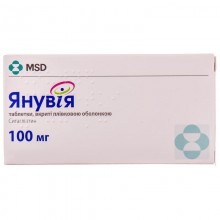



 Secure and encrypted payment processing
Secure and encrypted payment processing We ship to over 40 countries including the USA, UK, Europe, Australia and Japan
We ship to over 40 countries including the USA, UK, Europe, Australia and Japan Guaranteed refund or reship if you haven't received your order
Guaranteed refund or reship if you haven't received your orderJanuvia (sitagliptin) is an orally active, highly selective inhibitor of the enzyme dipeptidyl peptidase-4 (DPP-4), used to treat type II diabetes mellitus. sitagliptin differs in chemical structure and pharmacological action from analogues of glucagon-like peptide-1 (hpp-1), insulin, sulfonylurea derivatives, biguanides, γ-receptor agonists that are activated by the peroxisome proliferation activator γ-receptor (ppar-γ), α-glycoside inhibitors , Amylin analogues. inhibiting dpp-4, sitagliptin increases the concentration of 2 known hormones of the incretin family: hpp-1 and glucose-dependent insulinotropic peptide (gip). hormones of the incretin family are secreted in the intestine during the day, their level rises in response to food intake. incretins are part of the internal physiological system for regulating glucose homeostasis. with normal or elevated blood glucose, the hormones of the incretin family increase insulin synthesis and its secretion by pancreatic β-cells due to signaling intracellular mechanisms associated with cAMP.
GLP-1 also contributes to the inhibition of increased secretion of glucagon by pancreatic α-cells. A decrease in glucagon concentration with an increase in insulin levels reduces the production of glucose by the liver, which leads to a decrease in glycemia.
With a low concentration of glucose in the blood, the listed effects of incretins on insulin release and a decrease in glucagon secretion are not observed. GLP-1 and HIP do not affect glucagon release in response to hypoglycemia. Under physiological conditions, the activity of incretins is limited by the enzyme DPP-4, which rapidly hydrolyzes incretins with the formation of inactive products.
Sitagliptin prevents the hydrolysis of incretins by the enzyme DPP-4, thereby increasing the plasma concentrations of the active forms of GLP-1 and HIP. By increasing the level of incretins, sitagliptin increases the glucose-dependent release of insulin and leads to a decrease in the secretion of glucagon. In patients with type II diabetes mellitus with hyperglycemia, these changes in the secretion of insulin and glucagon lead to a decrease in the level of glycosylated hemoglobin A1c Hba1c and plasma concentrations of fasting glucose and after exercise.
The glucose-dependent mechanism of action of sitagliptin is different from the mechanism of sulfonylurea, which increases insulin secretion, even when glucose levels are low and can lead to hypoglycemia in patients with type II diabetes and in healthy volunteers. Sitagliptin is a potent and highly selective inhibitor of the DPP-4 enzyme and does not inhibit the closely related enzymes DPP-8 or DPP-9 at therapeutic concentrations.
In a two-day study involving healthy volunteers, only sitagliptin increased concentrations of active GLP-1, while metformin increased active and total concentrations of GLP-1 to a similar extent. The simultaneous use of sitagliptin and metformin had an additive effect on the concentration of active GLP-1. Sitagliptin, but not metformin, increased active HIP concentrations.
Clinical Efficiency and Safety
Sitagliptin improved glycemic control when used as monotherapy or in combination treatment (see table).
HbA Results1c placebo-controlled studies of monotherapy and combination treatment *
| Research | The average value of HbA1c baseline (%) |
Average change
HBa1c from baseline (%) t |
Placebo-adjusted
average change in HbA1c (%) t (95% CI) |
| Monotherapy studies | |||
| Sitagliptin 100 mg 1 time per day§ (n = 193) | 8,0 | –0,5 | –0,6+ (–0,8; –0,4) |
| Sitagliptin 100 mg 1 time per day|| (n = 229) | 8,0 | –0,6 | –0,8— (–1,0; –0,6) |
| Combination Therapy Study | |||
| Sitagliptin 100 mg once daily in addition to ongoing treatment with metformin|| (n = 453) | 8,0 | –0,7 | –0,7+ (–0,8%; –0,5) |
| Sitagliptin 100 mg once daily in addition to ongoing treatment with pioglitazone|| (n = 163) | 8,1 | –0,9 | –0,7+ (–0,9; –0,5) |
| Sitagliptin 100 mg once daily in addition to ongoing treatment with glimepiride|| (n = 102) | 8,4 | –0,3 | –0,6+ (–0,8; –0,3) |
| Sitagliptin 100 mg once daily in addition to ongoing treatment with glimepiride + metformin treatment|| (n = 115) | 8,3 | –0,6 | –0,9+ (–1,1; –0,7) |
| Sitagliptin 100 mg once daily in addition to ongoing treatment with pioglitazone + metformin treatment# (n = 152) | 8,8 | –1,2 | –0,7+ (–1,0; –0,5) |
| Initial therapy (2 times a day)||: sitagliptin 50 mg + metformin 500 mg (n = 183) | 8,8 | –1,4 | –1,6+ (–1,8; –1,3) |
| Initial therapy (2 times a day)||: sitagliptin 50 mg + metformin 1000 mg (n = 178) | 8,8 | –1,9 | –2,1+ (–2,3; –1,8) |
| Sitagliptin 100 mg once daily in addition to ongoing treatment with insulin (+/- metformin)|| (n = 305) | 8,7 | –0,61 | –0,6 +, ¶ (–0,7; –0,4) |
*The entire population of patients who received treatment (analysis of patients who began to receive treatment).
tLeast squares averages, adjusted